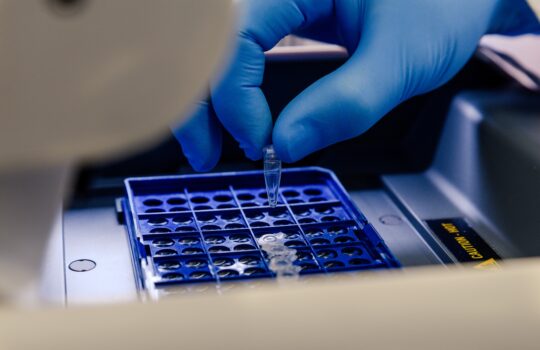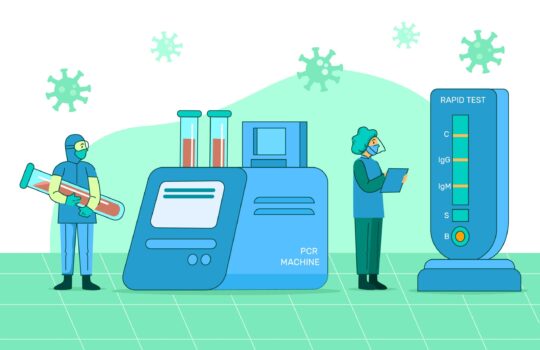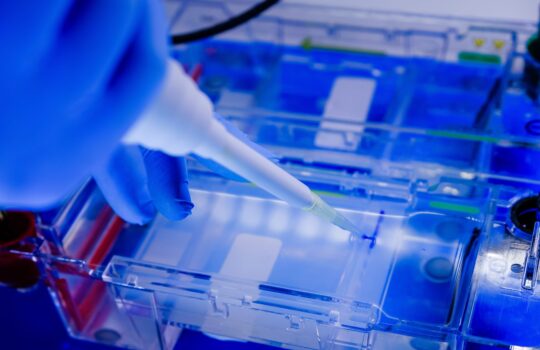Common Mistakes in PCR Experiments and How to Avoid Them

Polymerase Chain Reaction (PCR) is a fundamental technique in molecular biology, widely used for DNA amplification, gene expression studies, and diagnostic applications. However, even experienced researchers can encounter errors that compromise results. Here, we highlight some of the most common PCR mistakes and provide practical solutions to ensure accurate and reproducible outcomes.
1. Contamination Issues
Mistake:
- Cross-contamination of DNA samples leading to false-positive results.
- Carryover contamination from previous PCR reactions.
How to Avoid It:
- Use dedicated pipettes and filter tips to minimize aerosol contamination.
- Set up PCR reactions in a separate clean area away from DNA extraction and analysis.
- Include negative controls (no-template controls) to detect contamination.
- Regularly clean workspaces with DNA decontamination solutions.
2. Incorrect Primer Design
Mistake:
- Primers that form dimers or hairpins, leading to non-specific amplification.
- Poor primer specificity resulting in unintended products.
How to Avoid It:
- Use primer design software (e.g., Primer3, NCBI Primer-BLAST) to check for secondary structures and specificity.
- Aim for primers 18-25 bases long, with a GC content of 40-60%.
- Validate primer efficiency with gradient PCR before use in experiments.
3. Incorrect Annealing Temperature
Mistake:
- Setting an annealing temperature that is too low, leading to non-specific binding.
- Using a temperature that is too high, preventing primer binding.
How to Avoid It:
- Determine the melting temperature (Tm) of primers and set the annealing temperature 5°C lower than Tm.
- Optimize conditions using gradient PCR to find the best temperature for amplification.
4. Using Too Much or Too Little Template DNA
Mistake:
- Excess DNA can lead to non-specific amplification and primer depletion.
- Too little DNA results in weak or no amplification.
How to Avoid It:
- Use an optimized amount of DNA (typically 1-10 ng for plasmid DNA, 50-250 ng for genomic DNA).
- Quantify DNA concentration using a spectrophotometer (e.g., NanoDrop) before PCR.
5. Poor Pipetting Technique
Mistake:
- Inaccurate pipetting leading to variability in reaction setup.
- Mixing components improperly, causing inconsistent results.
How to Avoid It:
- Calibrate pipettes regularly and practice proper pipetting techniques.
- Mix PCR reactions gently by pipetting up and down or by vortexing briefly, avoiding bubbles.
6. Using an Inefficient DNA Polymerase
Mistake:
- Choosing the wrong polymerase for the application (e.g., using Taq polymerase for high-fidelity sequencing).
- Not using a polymerase suited for long or GC-rich templates.
How to Avoid It:
- Select the appropriate polymerase: Taq polymerase for routine PCR, high-fidelity polymerases (e.g., Phusion, Q5) for sequencing applications, and hot-start polymerases for increased specificity.
7. Incorrect Cycling Conditions
Mistake:
- Using too many or too few cycles, leading to poor amplification.
- Not allowing enough extension time for larger DNA fragments.
How to Avoid It:
- Typically, 25-35 cycles are optimal for most applications.
- Adjust extension time based on polymerase speed (Taq polymerase: ~1 min per kb, high-fidelity polymerases: ~30 sec per kb).
8. Not Including Proper Controls
Mistake:
- Failing to use positive or negative controls, making it difficult to troubleshoot problems.
How to Avoid It:
- Include a positive control to verify PCR efficiency.
- Use a negative control (no template control) to check for contamination.
9. Degraded or Impure DNA Samples
Mistake:
- Poor-quality DNA leads to inconsistent or failed amplification.
- Presence of inhibitors (e.g., ethanol, salts) from DNA extraction.
How to Avoid It:
- Extract and purify DNA using high-quality kits or phenol-chloroform extraction.
- Assess DNA integrity using agarose gel electrophoresis.
- Ensure DNA is free from PCR inhibitors by performing an additional ethanol precipitation or column purification if needed.
Conclusion
Avoiding these common PCR mistakes can significantly improve your experimental success rate. By carefully optimizing reaction conditions, maintaining a clean workspace, and using high-quality reagents, you can ensure reliable and reproducible PCR results.
Need High-Quality PCR Reagents?
At shop.cgenomix.com, we provide a wide range of PCR kits, enzymes, and laboratory consumables to support your research. Explore our collection today and elevate your lab efficiency!





